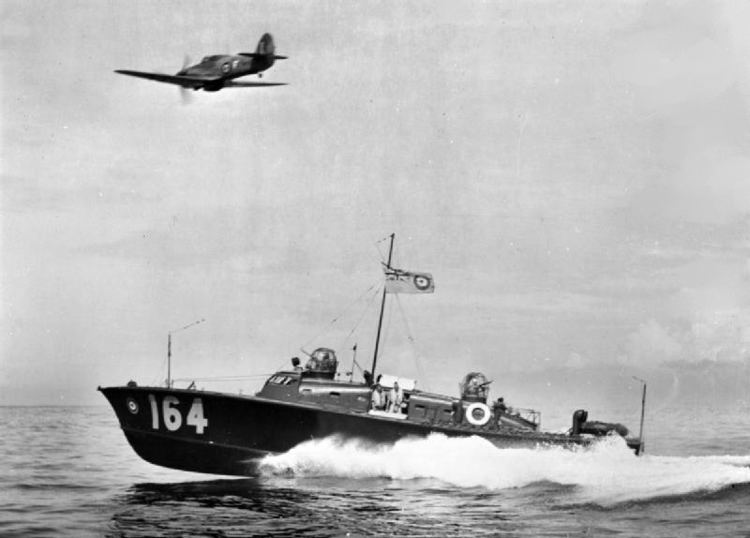Name Type Two 63 ft HSL Operators RAF, UK Displacement 21.5 tons | Builders British Power Boats Type High speed launch Length 63 ft | |
 | ||
The Type Two HSL was a 63 feet (19 m) high speed launch craft made by British Power Boat Company (BPBC). The craft were used during the Second World War for air-sea rescue operations to save Allied aircrew from the sea. The Type Two superseded the 64 feet (20 m) high speed launch, and itself was replaced by the 68 feet (21 m) Type Three HSL also built by the BPBC. It was nicknamed the 'Whaleback' due to the distinctive curve to its deck and humped cabin.
Contents
History
The Type Two was designed in 1937 by Hubert Scott-Paine, founder of the British Power Boat Company at Hythe. Scott-Paine had previously owned the Supermarine Aviation Company, later builders of the Supermarine Spitfire and several flying boat types.
A low set cabin contained the wheel-house, chart room and a sickbay. For defence against enemy aircraft, on top of the cabin were two aircraft-style turrets made by Armstrong-Whitworth initially with a single .303 in Vickers machine gun or Lewis gun (this was later improved - see Variants below). The mahogany hull was of the hard chine, planing type.
Usage
During the Second World War, the retrieval of pilots and aircrew that had been shot down over, or that had had to ditch, in the sea around the British Isles was the responsibility of the Royal Air Force Air Sea Rescue Service, (motto: "The sea shall not have them"). Rescue of downed aircrew was coordinated using RAF aircraft, aircraft operated by Coastal Command and the Royal Navy and rescue launches operated by the RAF Marine Craft Service and the Royal Navy.
The Type Two was supplied to RAF marine craft units from the middle of 1940. In total 69 craft were manufactured between 1940 and 1942.
Post war a number of the Type Two craft were transferred to the Royal Navy and a small number were given to the Italian Air Force. The vast majority of the Type Two craft belonging to the Admiralty were subsequently stored and later sold off as houseboats. None are currently owned by any museum or trust.s
Variants
Following their performance during the Dieppe raid in August 1942, the Type Two was modified. Extra armament was fitted — paired .303 in machine guns mounted either side of the wheel-house and a single 20 mm Oerlikon on the (strengthened) rear deck. Protection was improved by adding anti-shrapnel padding around the forward cabin area.
